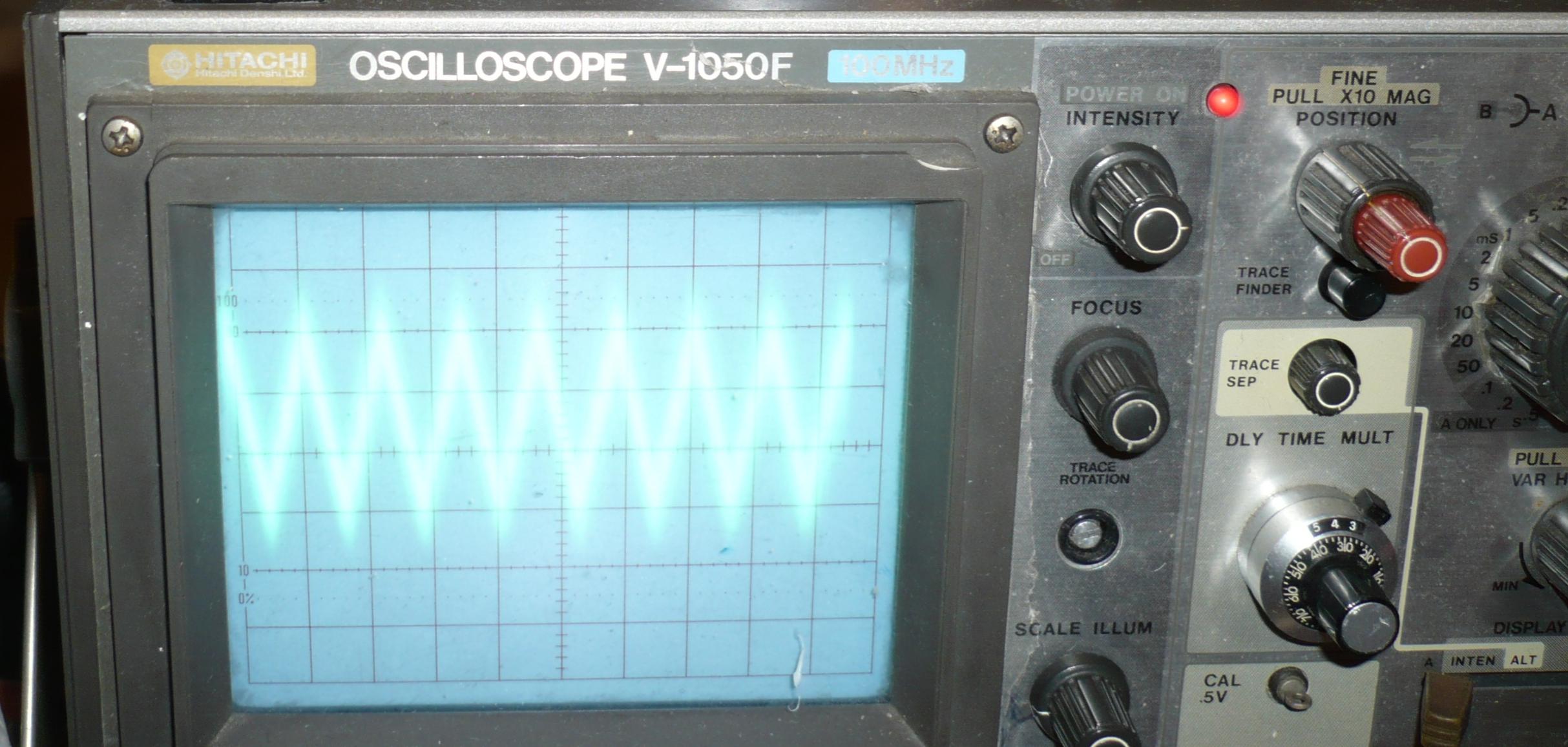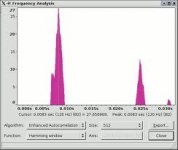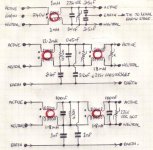Thankfully, I think CFL is a dying breed. Will be replaced by LED lighting; much more friendly to the grid and less radiated noise.
Not to mention that each one of these things contains mercury, and 90% of them wind up in the landfill.
AVE...
EU made my country ban all incandescent light bulbs with power above 35 watts in domestic use. We had one of the biggest light bulbs factories in Europe. Prices of them are now twice they used to be. Instead of them we should use CFL's. Eco-morons made this happen...
EU made my country ban all incandescent light bulbs with power above 35 watts in domestic use. We had one of the biggest light bulbs factories in Europe. Prices of them are now twice they used to be. Instead of them we should use CFL's. Eco-morons made this happen...
This is a problem when you have lawyers making engineering policy. Guys and gals who never took calculus or micro-economics, or a basic chem, physics of bio class.
The incandescent provides heat where it is needed -- they never figgered out that when you;re reading on a cold winter night, that 3.4K bulb is also keeping you warm more efficiently than the baseboard heater.
The incandescent provides heat where it is needed -- they never figgered out that when you;re reading on a cold winter night, that 3.4K bulb is also keeping you warm more efficiently than the baseboard heater.
EU made lots of stupid laws. Like one that states snails are land fish...
Halogens are still available. And the QUALITY of the light is as good if not better than incandescent lamps. The only clause: they must all be clear bulbs, so I had to stock on second market for white ones :/
CCFL sucks bad for eyes instead. I have to swith to led-backlight for my monitors as well as I did for the TV.
Excellent post the one quoted from the bybee thread.
And I'm still thinking about how best to avoid it at first time
I am still thinking about how best to detect (sorry!) this problem via measurements.
And I'm still thinking about how best to avoid it at first time
Oldish but still relevant:
http://www.radiocad.com/_downloads/SensAna.pdf?PHPSESSID=hfh147l
Should have answered this on the Bybee thread, as there have been numerous posts regarding not being able to see the noise or RF artifacts.
A Tektronix MSO4034 will let you see noise up to 350MHz
A HP 8566B or a HP8713C will help
Oh and an EMC lab and test set up helps
CFL suck with 3D glasses as well.
http://www.radiocad.com/_downloads/SensAna.pdf?PHPSESSID=hfh147l
Should have answered this on the Bybee thread, as there have been numerous posts regarding not being able to see the noise or RF artifacts.
A Tektronix MSO4034 will let you see noise up to 350MHz
A HP 8566B or a HP8713C will help
Oh and an EMC lab and test set up helps
CFL suck with 3D glasses as well.
Well the demodulation effects are generally the results for large signal disturbance. I have an idea that small signal RF disturbance affects sibilance in small signal amps, particularly in ICs with very low noise input stages. I'm still trying to understand how and how to prevent it cheaply. Anyone else found similar?
AVE...
Metal boxes and low-pass filters between every stage. Also when you are making huge holes for ventilation, then place metal net to cover the holes either from inside or outside...
I have never had serious RF problems thaw I couldn't eliminate with metal boxes, shielded cables and filters. Sometimes it's enough to add capacitor in feedback loop...
Metal boxes and low-pass filters between every stage. Also when you are making huge holes for ventilation, then place metal net to cover the holes either from inside or outside...
I have never had serious RF problems thaw I couldn't eliminate with metal boxes, shielded cables and filters. Sometimes it's enough to add capacitor in feedback loop...
Well the demodulation effects are generally the results for large signal disturbance. I have an idea that small signal RF disturbance affects sibilance in small signal amps, particularly in ICs with very low noise input stages. I'm still trying to understand how and how to prevent it cheaply. Anyone else found similar?
I'm sure you are right. Don't forget power supply. Its often an excellent conduit for RF. Toroids with no interwinding screen (ie 99% of them) are virtually transparent over 100kHz, as are big electro caps; long gone past self resonance at RF frequencies.
Going back to my RF layout days, we could really improve a circuit's performance by decoupling the PSU properly. Admittedly most of the circuits I laid out used single ended devices so it was pretty critical to have clean DC. PSRR for opamps may look good at low frequencies but what about at RF? We found the common 100nF decoupler hugely less effective than something like this:
MURATA NFM21PC104R1E3D supression filter.
Stick 'em as close to the active device as possible.
The trouble is everything matters!
Urgon, lpf do help indeed, but they are like a blanket for music.
Even one, at the inputs makes my heart weep.
Recently, I'm seeing more and more amplifying devices built with a case milled from solid block of alu. This is not a marketing ploy. Unfortunately it's prohibitively costful for the diyer (talking 2-3k$ of casework)
Even one, at the inputs makes my heart weep.
Recently, I'm seeing more and more amplifying devices built with a case milled from solid block of alu. This is not a marketing ploy. Unfortunately it's prohibitively costful for the diyer (talking 2-3k$ of casework)
MURATA NFM21PC104R1E3D supression filter.
Stick 'em as close to the active device as possible.
The trouble is everything matters!
What matters there is having a low inductance ground connection - i.e. ground plane. Note the SRF of the 0.1uF is only 70MHz, that would be measured with a ground plane I suspect. The others have lower SRFs. I tried some of those to fix up an EMC compliance problem I was having - they didn't do the trick because my ground was too noisy. Series inductors (preferably lossy ones) for me these days...
The culprits
We are discussing the "culprits". Let's look at what they do to the mains.
CFL- it's SMPS usually is a resonate circuit at 40-300khz. To keep costs down .. little or no RFI filtering is employed. One big hit on google for RFI issues associated with these "ecoidiot" devices. Compact Fluorescent Lamp
PC's - big bloated 600-1KW SMPS with dubious filtering. Some are better , like my Antec 600 watter ... a good multistage common mode filter on the AC. Still even this HQ one's "garbage" can be seen at the power strip with a CRO - (below 1)
Ackadia's power protection section
Cable ground / signal - RFI riding upon shield from cable tv coax? - Electronics | DSLReports Forums Yuk..
Turn on a good AM radio around any of these "culprits" and listen to the "music"
To fix this , since I am going to make a 2 oz. PCB revision to my soft start anyways , why not integrate a killer RFI filter as well ? another good artical -
Audio Noise and AC Systems . I have plenty of "real estate" to use on my PCB , so (below 2) is doable and better than most OEM's.
OS
We are discussing the "culprits". Let's look at what they do to the mains.
CFL- it's SMPS usually is a resonate circuit at 40-300khz. To keep costs down .. little or no RFI filtering is employed. One big hit on google for RFI issues associated with these "ecoidiot" devices. Compact Fluorescent Lamp
PC's - big bloated 600-1KW SMPS with dubious filtering. Some are better , like my Antec 600 watter ... a good multistage common mode filter on the AC. Still even this HQ one's "garbage" can be seen at the power strip with a CRO - (below 1)
Ackadia's power protection section
Cable ground / signal - RFI riding upon shield from cable tv coax? - Electronics | DSLReports Forums Yuk..

Turn on a good AM radio around any of these "culprits" and listen to the "music"
To fix this , since I am going to make a 2 oz. PCB revision to my soft start anyways , why not integrate a killer RFI filter as well ? another good artical -
Audio Noise and AC Systems . I have plenty of "real estate" to use on my PCB , so (below 2) is doable and better than most OEM's.
OS
Attachments
Last edited:
Don't forget the RFI coming from the circuit components also such as switching DC-DC converters - about 80KHz in this case:

So lets do it , I have scoped the output of the typical line filter (the first one in my picture with the 3 drawings above) and it reduces the "garbage" by a huge margin.
Since this is DIY , why not build the 2 stage filter ? (drawings 2/3 above). Should not cost much , maybe 10$.
OS
Found it. The best for our beloved audio !!
Hybrid CM/ DM high performance discrete RFI filter.
http://www.pes.ee.ethz.ch/uploads/tx_ethpublications/APEC_2006_Biela.pdf
Way better than most OEM or SMPS. Used on critical equipment (medical/military). Still , 10$ or scrap-box DIY territory.
OS
Hybrid CM/ DM high performance discrete RFI filter.
http://www.pes.ee.ethz.ch/uploads/tx_ethpublications/APEC_2006_Biela.pdf
Way better than most OEM or SMPS. Used on critical equipment (medical/military). Still , 10$ or scrap-box DIY territory.
OS
Way better than most OEM or SMPS. Used on critical equipment (medical/military).
The filter in that paper would never get approved for medical. 9.4nF from line to earth? Anyone want to calculate the earth leakage... Geddoutahere
The filter in that paper would never get approved for medical. 9.4nF from line to earth? Anyone want to calculate the earth leakage... Geddoutahere
Well , submit one that would (schematic please). PS , that one is still better than the standard OEM (I simulated all of them with LT)
OS
- Status
- This old topic is closed. If you want to reopen this topic, contact a moderator using the "Report Post" button.
- Home
- General Interest
- Everything Else
- RF & Audio

